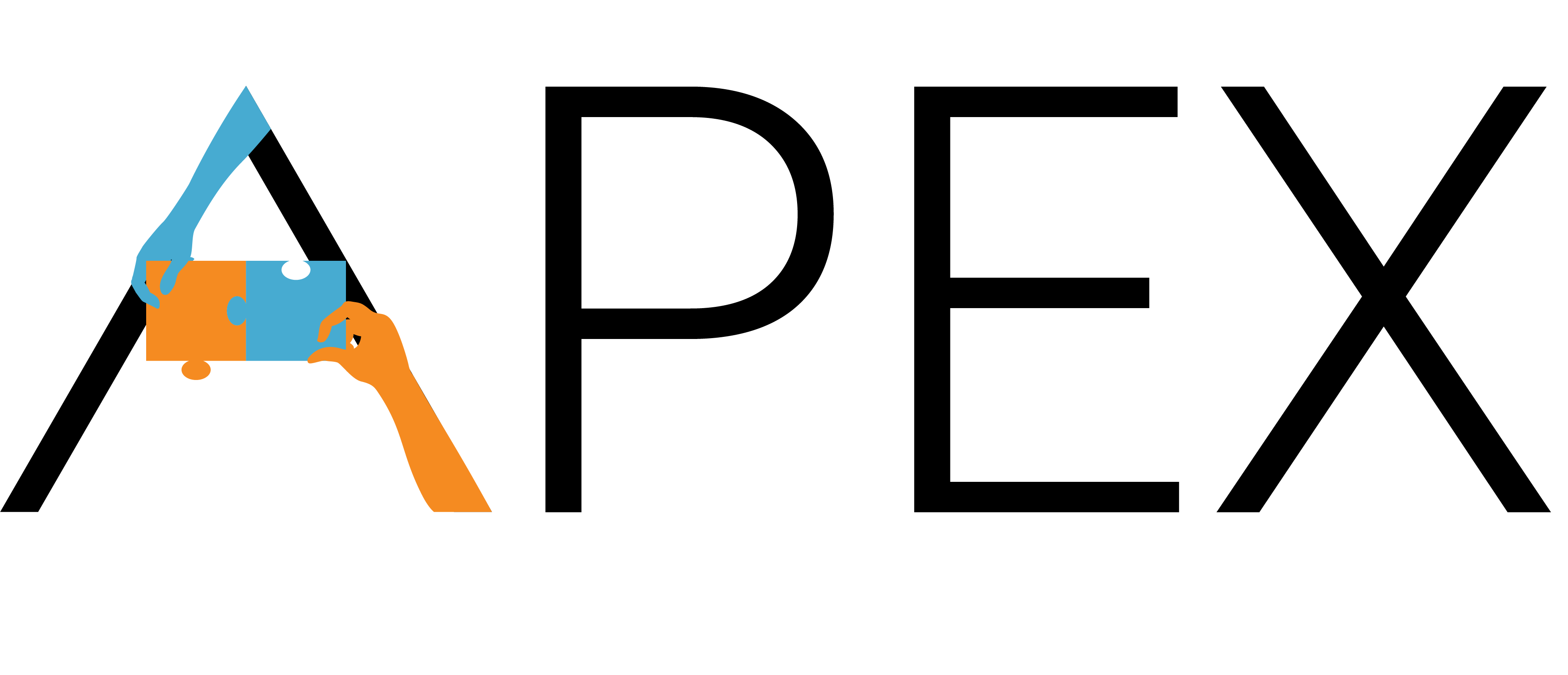 Coding Scheme
Coding Scheme
About APEX
Collaborative creative activities involving physical interaction are becoming more prevalent in museums as a way of promoting opportunities for exploratory learning-through-doing. However, there is still a need for new techniques for understanding how participants’ engagement with these exhibits relates to learning and interest development, as metrics typically used for evaluation in more formal learning environments (e.g. pre/post tests) can be difficult to implement within informal learning spaces, such as museums, science centers, and after school centers.
Our team of researchers has expanded Humphrey et al.’s (2005) Active Prolonged Engagement (APE) framework—an established framework for understanding participant interactions with open-ended, co-creative museum exhibits—into a detailed qualitative coding scheme to aid in understanding how participants’ intellectual, social, physical, and emotional engagement relates to progressive learning and interest development over time. We call this framework APEX (APE eXpanded). The APEX framework is intended to assist researchers in understanding how and when learning and interest development occur in order to inform the iterative design process of exhibits.
This website provides a set of open-source materials for evaluators and researchers working in informal learning spaces.
Resources you will find on this website include the APEX coding scheme for qualitative video analysis, forms for live observation using the APEX coding scheme, training materials for researchers/evaluators, code and instructions for data analysis and visualization, and example applications of APEX in museum environments.
What types of installations/visitors is APEX intended for?
APEX is intended as a tool for understanding participant interactions with co-creative exhibits. These exhibits are typically collaborative, meaning that multiple people are able to interact together at the exhibit and socially engage with each other. They are also creative or expressive, meaning that they facilitate creative exploration and there is no predefined outcome for the visitor. Visitor experiences can be shaped by their motivations and interests, and outcomes often look different from group to group. We have used APEX primarily to understand family group interactions, although it can be used for school groups as well, as long as interactions are not driven by teacher assignments (Humphrey et al., 2005 point out that this could inhibit open-ended creative exploration).
What types of questions will APEX answer?
We list a number of evaluation questions that APEX can help you to answer below. You can choose to perform a full APEX analysis if you wish to answer all of these questions, or you can analyze using only a subset of the coding scheme (e.g. social codes) if you are interested in only one dimension of participant engagement at your exhibit. Applying APEX to multiple exhibits can allow for a comparative analysis.
How are participants at my exhibit socially engaging with each other?
- Are they mostly working independently or are they collaborating as a group?
- Is one member of the group taking charge and acting as a teacher or a leader, or are all members contributing equally to the interaction?
- When/how often do moments of discord or social conflict occur and are they productive?
- Does the nature of social interaction change over the course of a participant group’s interaction with the exhibit?
- How does the nature of social engagement change from exhibit to exhibit? For example–are some exhibits in my museum better at facilitating collaboration than others?
How are participants engaging physically with the exhibit?
- Are they using all of the exhibit components in a coordinated manner, or are they simply testing out isolated components in a haphazard way?
- Are the interaction dynamics with my exhibit easily apprehendable (Allen, 2004) to visitors?
- Does the nature of physical interaction change over the course of a participant group’s interaction with the exhibit?
- How does the nature of physical engagement change from exhibit to exhibit?
How are participants engaging emotionally with the exhibit?
- When/how often do participants exhibit positive/negative emotional responses?
- Does the nature of emotional engagement change over the course of a participant group’s interaction with the exhibit?
- How does the nature of emotional engagement change from exhibit to exhibit?
How are participants engaging intellectually with the exhibit?
- Are participants engaging in learning dialogue with each other while interacting with the exhibit?
- When/how often do participants seek information by asking questions?
- When/how often do participants share information by making observations or hypotheses?
- When/how often do participants apply prior knowledge to their interaction or engage in planning/goal-setting activities?
- Does the nature of intellectual engagement change over the course of a participant group’s interaction with the exhibit?
- How does the nature of intellectual engagement change from exhibit to exhibit?